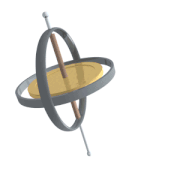A bullet, out of balance at the nose end, will continue to yaw, further and further from the line of sight, as range increases; one with an inbalance, at the tail, will 'settle down' as range increases, due to the effects of air friction.
But a lousy 'crown', at the muzzle, will do the same thing; ie, shoot worse groups at 50, than 100, or further, if one is reading simply moa; a bad crown 'tips' the bullet, but a good bullet will 'settle down'.
Now, this question was asked, in original form, about rimfire rifles, ammo for which we have little control, except the 'buying decision'.
That said, the bullets are swaged, from lead wire, in precision dies, which should allow for essentially no voids, or incusions, so balance shoud be a constant, for the bullet.
Stuff it into an oversized chamber, or a chamber with a 'generous' throat, and we may well launch it, sorta sidewise, and create the imbalance, by cutting lead, in the bore, and likely,with an 'off center' bullet, range will only make it worse!
I order, inspect, and use only barrels to my dimension; my reamers are ordered to my specs, and anything outside those numbers, is sent back.
Frequently, my rifles show returns on my investment; a rewarding, gratifying, thing, what mkes it all worthwhile!
Today, most of my bigger bore, 'cast bullet' rifles, shoot nothing but bullets dropped from 'nose pour' molds, to insure that if imbalance exists, it will be 'out front', to ensure the best possible acuracy, at all ranges.
A forty caliber Sharps, one that I like a lot, wil seldom shoot less than 1 1/2 inches, at 100, but less, at 200, and by 300,we gotta swear to 1 1/2 inch groups, and predictably constant, when I do my part;a 420 gr bullet, about 1800 fps, that absolutely 'goes to sleep' before 150, and hits like a hammer; it's over an inch and a quarter long!
This is a rifle that does not know wind, only hold, but is barreled in a relatively 'fast' twist, for the caliber.
All leading up to a highly controversial term, and subject.
If for a moment, I assume a bullet to be a symmetric, balanced, monolithic cylinder, how, by rotation, can I 'Overstabilise' it?
With good bullets, this is impossible; only if there exists a bullet, or contrenciity, problem, is 'decreased' accuracy, possible.
My 'wind' barrel carries a Shilen pedigree, and a 14" twist, for a .22 LR, a bit 'fast', by conventional wisdom, yet it shoots as well, in wind, as in still air, given ammo it 'likes', the 16",and 17" barrels, maybe shoot a little tighter, in still air, but "lose it",in the wind, by comparison.
These are as close to 'identical items',in bore, choke taper, and profile, as it gets; all use the same fore end, etc, on a 44 1/2 Stevens Chassis, tuned for accuracy, and for the answer to exactly this question; wht is the optimal rifling twist, for a .22LR, match quality, cartridge?
Yet, to date, I have yet to find a better 'wind' barrel, than the 14" Shilen!
The 17" is awesome, in still conditions, but as the wind rises, it goes all to hell, for accuracy, by my standards, at the least, while the 14 loves windy weather!
A 12" twist .308 seems to support this conclusion, as it seems to shoot as well in wind as , or better than, the normal 14" twist barrels.
hope this helps.
 ...just kiddin'.
...just kiddin'.


